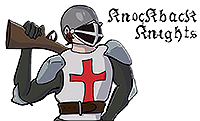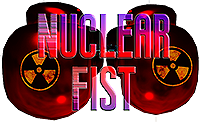Yes, you can!
 Over the past four years we have built a high school grade 11 and 12 software engineering program focused on video game design. The course uses the Software Engineering Body of Knowledge – a freely available document from the IEEE, that clarifies and develops the organizational and engineering best practices needed to build a modern video game. Using SWEBOK as a guide to project management and with the support of Unity, who gave us professional licenses for their game design software and Blender, a non-profit software company who offers professional grade 3d modelling software for free, we build our games.
Over the past four years we have built a high school grade 11 and 12 software engineering program focused on video game design. The course uses the Software Engineering Body of Knowledge – a freely available document from the IEEE, that clarifies and develops the organizational and engineering best practices needed to build a modern video game. Using SWEBOK as a guide to project management and with the support of Unity, who gave us professional licenses for their game design software and Blender, a non-profit software company who offers professional grade 3d modelling software for free, we build our games.
This semester our three student led groups conceptualized, planned and managed to completion three very different projects:
Slimecing: slime fencing game: Slimecing (@slimecing_) | Twitter
Nuclear Fist VR boxing simulator: Spook Box Games (@box_spook) | Twitter
Knockback Knights: physics driven FPS: Knockback Knights (@BackKnights) | Twitter
 Management is the most challenging part of the process. It’s hard enough to manage people to begin with, but when you’re a teen trying to manage other teens it becomes monumental. Setting high standards, encouraging collaboration, communication and goal setting to produce a transparent, adaptive and ultimately effective engineering processes is the real goal. Once again these students can’t believe what they’ve achieved in only 12 short weeks. Being an M level technology credit we have a full range of academic streams in the room, but the collaborative approach means everyone is working towards those higher standards.
Management is the most challenging part of the process. It’s hard enough to manage people to begin with, but when you’re a teen trying to manage other teens it becomes monumental. Setting high standards, encouraging collaboration, communication and goal setting to produce a transparent, adaptive and ultimately effective engineering processes is the real goal. Once again these students can’t believe what they’ve achieved in only 12 short weeks. Being an M level technology credit we have a full range of academic streams in the room, but the collaborative approach means everyone is working towards those higher standards.
This semester we worked cross curricularly with our arts department to build up our visual design consistency:
Concept Art Knockback Knights – Google Drive
Concept Art Slimecing – Google Drive
Concept Art Nuclear Fist – Google Drive
We’re thinking about working with business marketing students next year to expand our outreach. The cross curricular opportunities in this are continually expanding. Eventually we hope to have arts students helping us build a consistent and complex visual style, drama helping us creating realistic movement in our animations and business helping us market the results.
I just finished marking the exams. With a class average over 80% you’d think this is considered an easy course, but all the wishy washy types were shaken out in the first few weeks and replaced by keen students fighting to get into the course. Even those with exceptional final grades commented on how challenging and ‘real’ the course feels. One noted, “there is no where else where we’re trusted to work on a project this large and complicated.” It can’t happen if standards aren’t high, but the reputation of the course and the exceptional output it produces have done more to stream this course than academic streaming ever could.
 We’ve never run this course in semester one before. We’re over subscribed every year but not enough to spawn a second section. If we had multiple sections working on this we could hand off projects between semesters and run the course all year. We come incredibly close to making a viable game title in only eleven to twelve weeks in a single semester. If we can leverage the word of mouth from semester one, perhaps we can bump sign ups to about 50 students and warrant a second section. Were that to happen, both sections would still be 11/12 splits in order to encourage the handing on of hard won knowledge to new students.
We’ve never run this course in semester one before. We’re over subscribed every year but not enough to spawn a second section. If we had multiple sections working on this we could hand off projects between semesters and run the course all year. We come incredibly close to making a viable game title in only eleven to twelve weeks in a single semester. If we can leverage the word of mouth from semester one, perhaps we can bump sign ups to about 50 students and warrant a second section. Were that to happen, both sections would still be 11/12 splits in order to encourage the handing on of hard won knowledge to new students.***
You can download and play Slimecing from here: Slimecing by Q
…and here is their engineering review:
Slimecing Project Wrap Up Presentation – Google Slides
Knockback Knights and Nuclear Fist both intend to continue to develop their games but don’t have a release ready yet. Below are their engineering reviews.
Nuclear Fist Wrap Up Presentation – Google Slides
Knockback Knights Final Presentation – Google Slides
The Slimecing lead asked if we might start a GameDev club to continue working on these projects in semester two. That tells you something about how engaging our approach to tackling very complicated software engineering processes can be.
Two of our digital artists are taking a run at Skills Ontario’s 3d character modelling competition this year. We have grads from this course who have started their own game development studio with over a million downloads. We have graduates who have attended top programs at Waterloo University, Sheridan College and other post secondary locations who are now working in the industry. If you think it video games aren’t a big deal, you haven’t looked at the opportunities there lately.
Between this software course, one of the strongest grade 11 computer engineering classes ever, qualifying two teams for CyberTitan national semi-finals, and some very promising new grade 9s, what a satisfying semester it has been!
Follow these student software engineering projects on Twitter if you want to keep up with what happens next.
from Blogger http://bit.ly/2DDnPZB
via IFTTT


